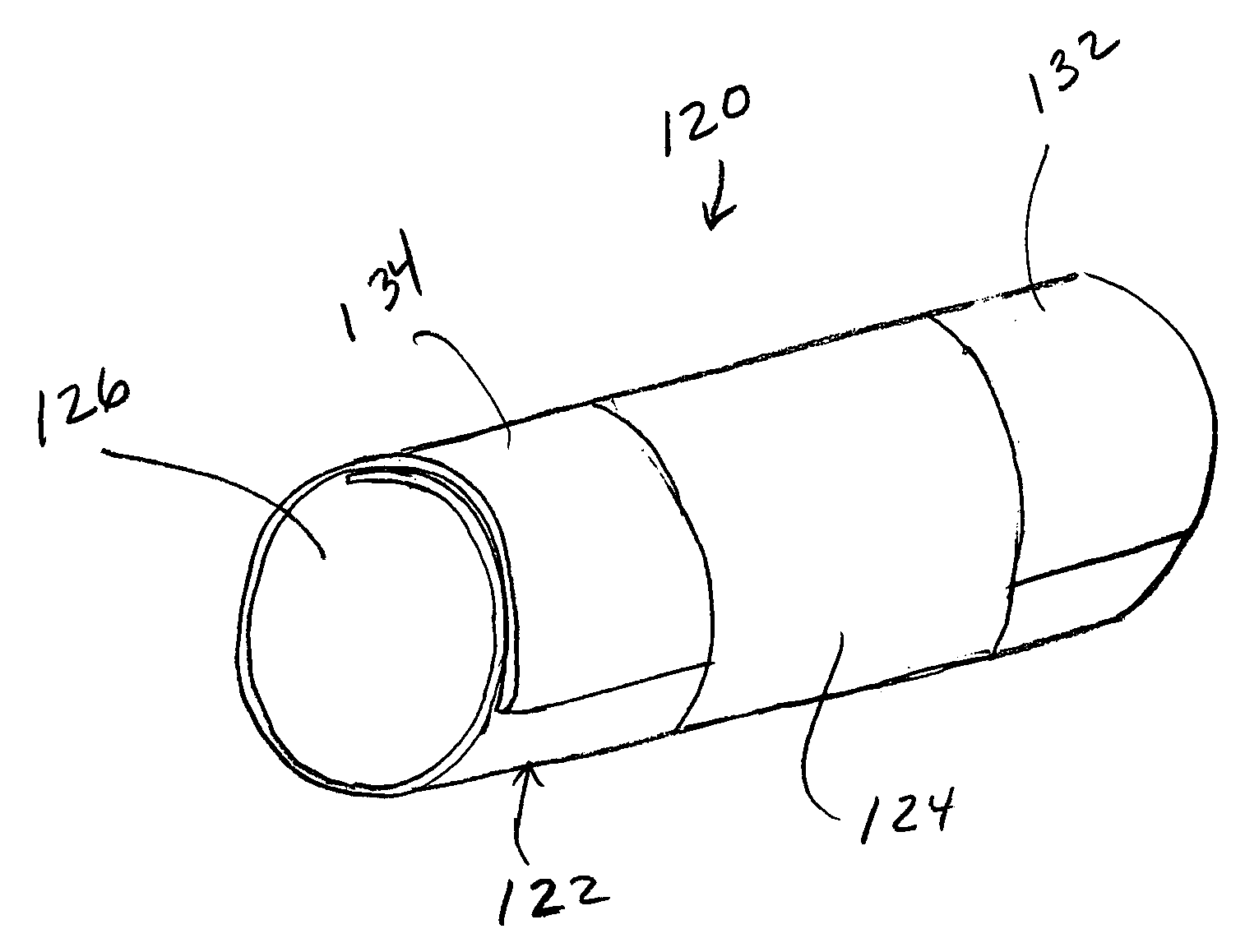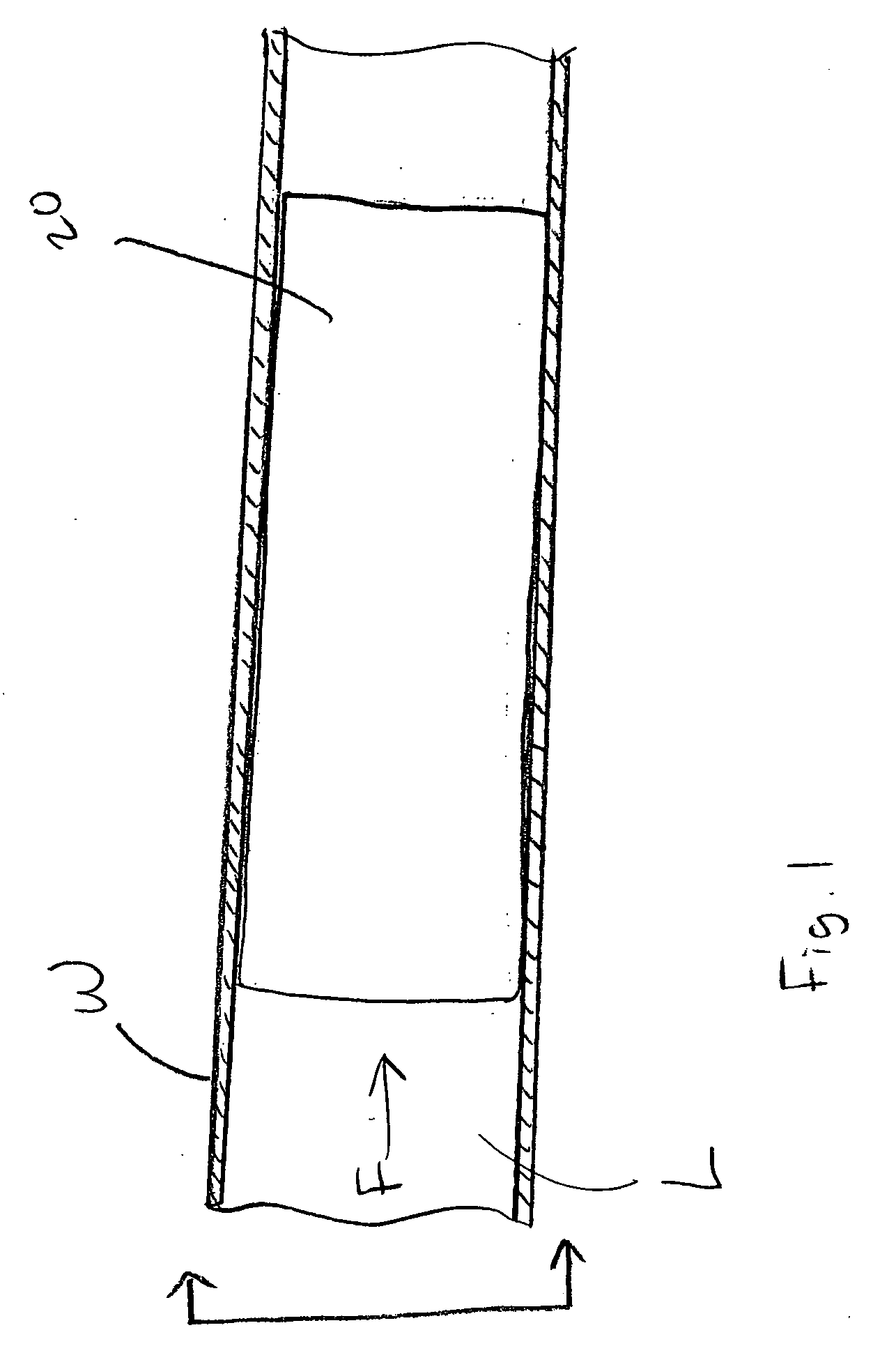Bioabsorbable stent
a bioabsorbable stent and stent technology, applied in the field of medical devices, can solve the problems of undesirable rapid bioabsorption of bioabsorbable stents, stents being absorbed before the body lumen, and high rates of absorption of stent constituent materials, and achieve the effect of reducing the rate of absorption of the portion
- Summary
- Abstract
- Description
- Claims
- Application Information
AI Technical Summary
Benefits of technology
Problems solved by technology
Method used
Image
Examples
Embodiment Construction
[0020]FIG. 1 is a schematic illustration of a stent 20 embodying the principles of the invention. The stent 20 is configured to be placed or otherwise implanted into a natural body lumen L of a mammal (e.g., a blood vessel or ureter) to support the walls W of the body lumen L, such as after a medical procedure (e.g., a coronary angioplasty). A bodily fluid F may flow through lumen L. The stent 20 is constructed of materials that are configured to be absorbed by the mammalian body over a controlled or predetermined period of time.
[0021] Specifically, the stent 20 includes a support structure 22 and an absorption inhibitor layer 24. FIGS. 2 and 3 illustrate two alternative cross-sections of the stent 20 shown in FIG. 1. The support structure 22 includes an inner surface 28 and an outer surface 30, and defines a lumen 26. FIG. 2 illustrates stent 20 having an absorption inhibitor layer 24 disposed on the outer surface 30 of stent 20. FIG. 3 illustrates stent 20 having an absorption in...
PUM
| Property | Measurement | Unit |
|---|---|---|
| Fraction | aaaaa | aaaaa |
| Time | aaaaa | aaaaa |
| Time | aaaaa | aaaaa |
Abstract
Description
Claims
Application Information
 Login to View More
Login to View More - R&D
- Intellectual Property
- Life Sciences
- Materials
- Tech Scout
- Unparalleled Data Quality
- Higher Quality Content
- 60% Fewer Hallucinations
Browse by: Latest US Patents, China's latest patents, Technical Efficacy Thesaurus, Application Domain, Technology Topic, Popular Technical Reports.
© 2025 PatSnap. All rights reserved.Legal|Privacy policy|Modern Slavery Act Transparency Statement|Sitemap|About US| Contact US: help@patsnap.com



